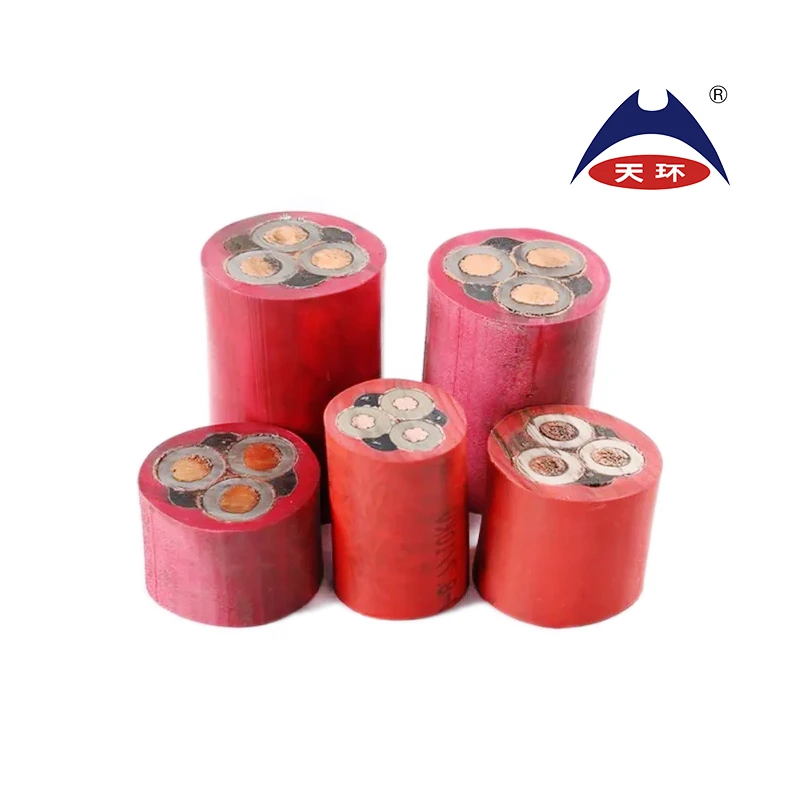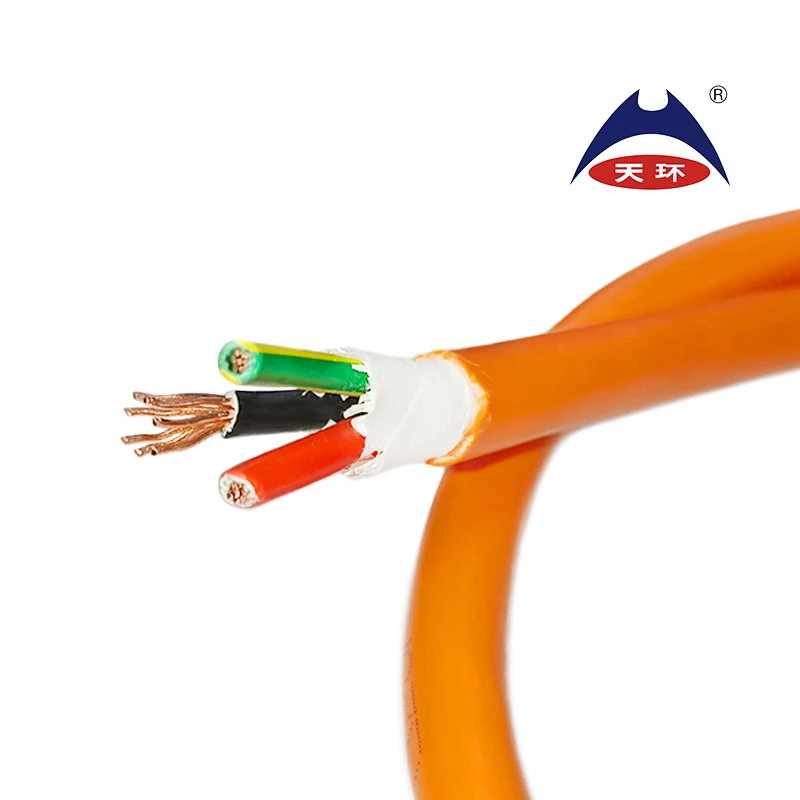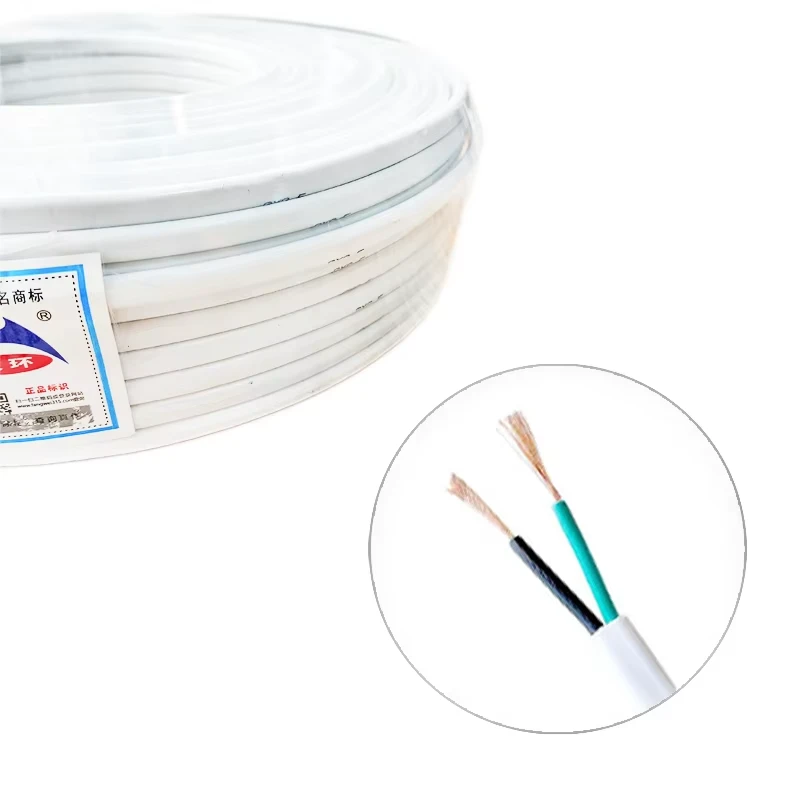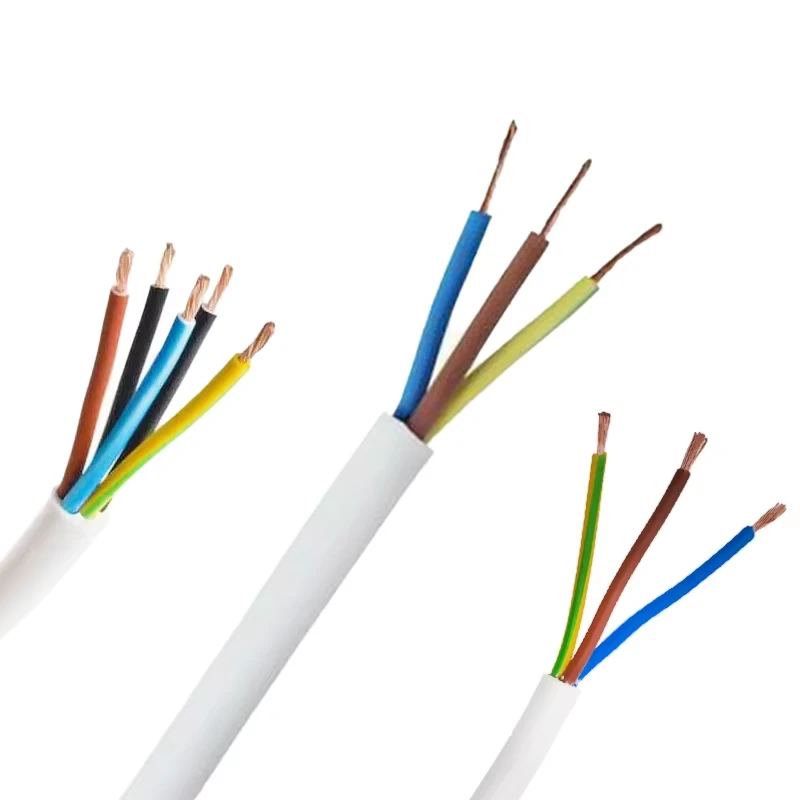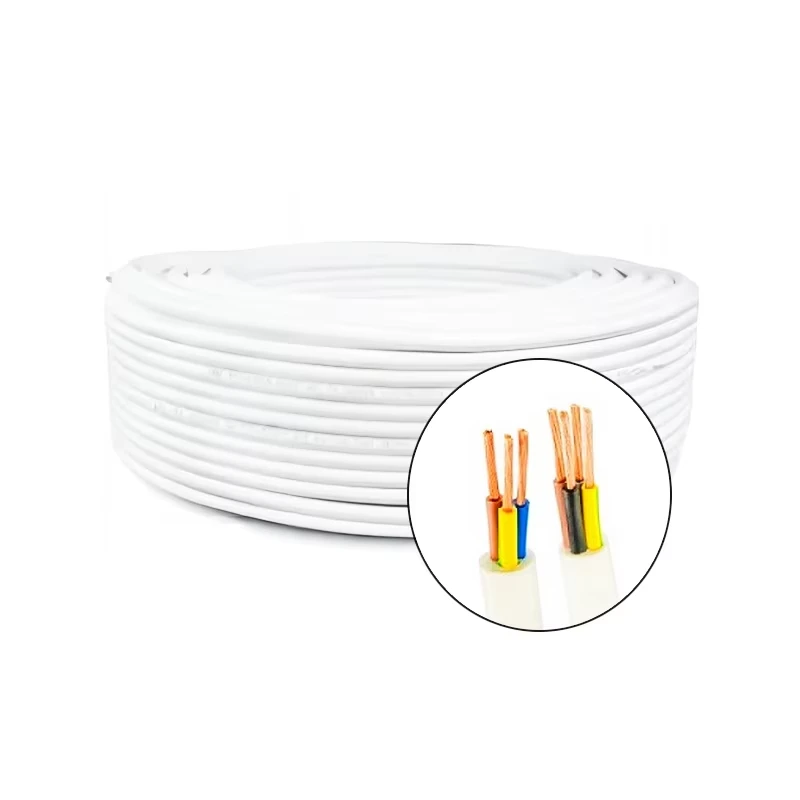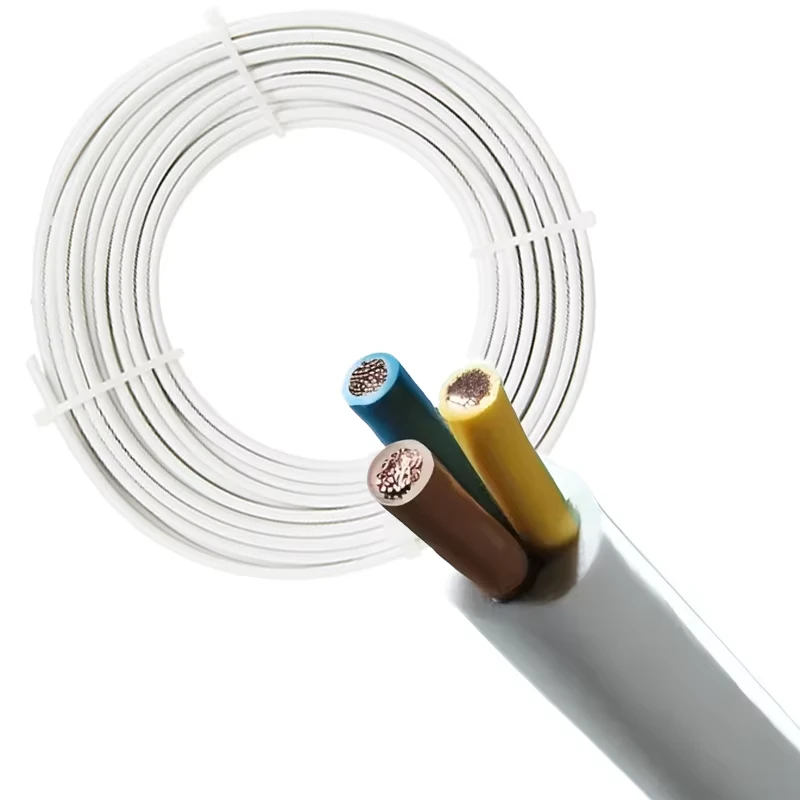
3 Core TPS Cable - Durable Electrical Cable for Safe Wiring Solutions
- Comprehensive Introduction to 3 Core TPS Cable
- Technical Specifications and Advantages of TPS Cable
- Comparison of Leading TPS Cable Manufacturers
- Customization Options of 3 Core TPS Cable
- Application Scenarios and Typical Use Cases
- Installation Considerations and Best Practices
- Summary: Why 3 Core TPS Cable is a Superior Choice

(3 core tps cable)
Comprehensive Introduction to 3 Core TPS Cable
The 3 core tps cable
is a pivotal element in contemporary electrical wiring systems, celebrated for its safety, reliability, and efficiency in domestic, commercial, and industrial settings. TPS stands for Thermoplastic Sheathed, a reference to the cable’s durable insulation and sheath material. Employing three copper conductors—commonly colored for identification—this cable is engineered to handle power distribution with a rated voltage typically between 450/750V, suitable for circuits that require multiple live wires or a combination of live, earth, and neutral conductors. The widespread adoption of TPS cable across global markets is attributed to its compliance with rigorous safety standards, flexibility during installation, and robust construction, making it preferable for power distribution boards, lighting circuits, and sub-main cables.
Technical Specifications and Advantages
Understanding the technical makeup of TPS cables, particularly the 3 core variant, is fundamental for system designers. Normally, the cable consists of copper conductors ranging from 1.5mm² to 16mm² in cross-sectional area, enveloped in an insulated thermoplastic layer. Its sheath resists UV, water, and a variety of chemicals, ensuring longevity and adaptability to different environmental conditions. Among its technical advantages, the cable boasts a current capacity ranging from 15A to over 50A (depending on conductor size and installation method), low smoke and halogen emissions, and impeccable dielectric strength. These factors, combined with a flexible design, allow for tight bending radii, which is vital in space-constrained installations or retrofitting projects. According to a 2023 market analysis, over 73% of new residential developments in Australia utilize 3 core TPS cables due to their ease of installation and code compliance. The following table summarizes typical specifications:
| Specification | Standard Value | Advantage |
|---|---|---|
| Conductor Material | Copper | Excellent conductivity |
| Insulation Material | Thermoplastic PVC | High dielectric strength |
| Sheath Type | UV Stabilized PVC | Outdoor suitability |
| Operating Temperature Range | -15℃ to +70℃ | Wide climate tolerance |
| Voltage Rating | 450/750V | Suitable for most installations |
Manufacturers Comparison: TPS Cable Quality and Performance
The TPS cable market is dominated by notable manufacturers whose products vary in performance, price, and safety certifications. For electricians and project managers, choosing the right brand is crucial to ensure code compliance and long-term system reliability. Below is a comparative table illustrating product features among leading international manufacturers—Prysmian Group, Nexans, and NHP Electrical:
| Manufacturer | Conductor Purity (%) | Sheath Thickness (mm) | UV Resistance | Certification | Typical Price (USD/100m) |
|---|---|---|---|---|---|
| Prysmian Group | 99.99 | 1.8 | Excellent | AS/NZS 5000.2 | 105 |
| Nexans | 99.95 | 1.7 | Very Good | AS/NZS 5000.2 | 98 |
| NHP Electrical | 99.90 | 1.6 | Good | AS/NZS 5000.2 | 92 |
Customization Options and Project-Specific Configurations
The versatility of TPS cable extends into customization, addressing the unique specifications of complex installations. Custom orders may include variations in sheath color (for specialized identification), specific conductor cross-sections for high or low current needs, and enhanced insulation thickness for environments with above-average temperature or chemical exposure. Large-scale industrial sites, for example, routinely require cables with improved fire-resistant additives or reflective outer sheaths to minimize thermal accumulation under continuous load. Manufacturers typically offer project blueprint collaboration, enabling tailored solutions that align with international wiring codes and high-integrity data transmission requirements. For projects demanding impeccable safety records, such as hospitals or data centers, custom 3 core tps cables can be procured with low smoke zero halogen (LSZH) insulation or armored protection to further mitigate risk.
Application Cases: Diverse Projects Utilizing TPS Cable
The real-world implementation of TPS cable is vast. In the residential sector, it is almost ubiquitous for internal wiring, lighting circuits, and high-load devices such as ovens and air conditioners. Commercially, office towers and retail complexes rely on 3 core TPS cable for reliable, safe electricity distribution. Industrial applications favor TPS cable in automated assembly lines, data servers, and backup power frameworks, where mechanical strength and consistent conductivity are crucial.
For instance, a recent 70,000 m² logistics warehouse in Melbourne installed over 120,000 meters of 3 core tps cable, reducing installation hours by 18% compared to traditional armored cable systems, thanks to its flexibility and lighter handling weight. A Brisbane hospital’s new wing utilized LSZH TPS cable to meet strict emission control standards—ensuring patient safety even in the rare event of fire. Additional use cases include agriculture irrigation systems, temporary event centers, and off-grid solar energy installations, each benefiting from the cable’s adaptability and ruggedness.
Installation Considerations and Best Practices
While TPS cable is engineered for straightforward installation, best practices optimize safety and performance. Attention must be paid to cable support spacing, minimum bend radius (typically 6x the overall cable diameter), and avoidance of direct sunlight exposure unless the cable is UV-protected. Secure clamping prevents mechanical strain at termination points. When planning routes, installers should minimize proximity to heat sources or areas prone to moisture ingress—though the cable’s sheath is water-resistant, prolonged exposure can reduce service life. Regular inspection intervals, especially in industrial settings, are advised to detect early signs of wear or sheath damage. Empowering site teams with up-to-date installation guidelines, matched to the selected manufacturer’s recommendations, strongly contributes to achieving a durable and compliant electrical infrastructure.
Summary: The Value Proposition of 3 Core TPS Cable
In summary, 3 core tps cable stands out as a gold-standard solution for modern wiring requirements, appealing to contractors and engineers through a blend of safety, durability, and cost-effectiveness. Its customizable attributes and broad utility across sectors underscore its adaptability. When comparing the leading offerings in the market, it is evident that investment in higher-specification TPS cable supports reduced maintenance costs and greater operational reliability. With proven case studies validating its performance and a wealth of customization possibilities, 3 core tps cable continues to shape the backbone of safe and efficient electrical systems worldwide.
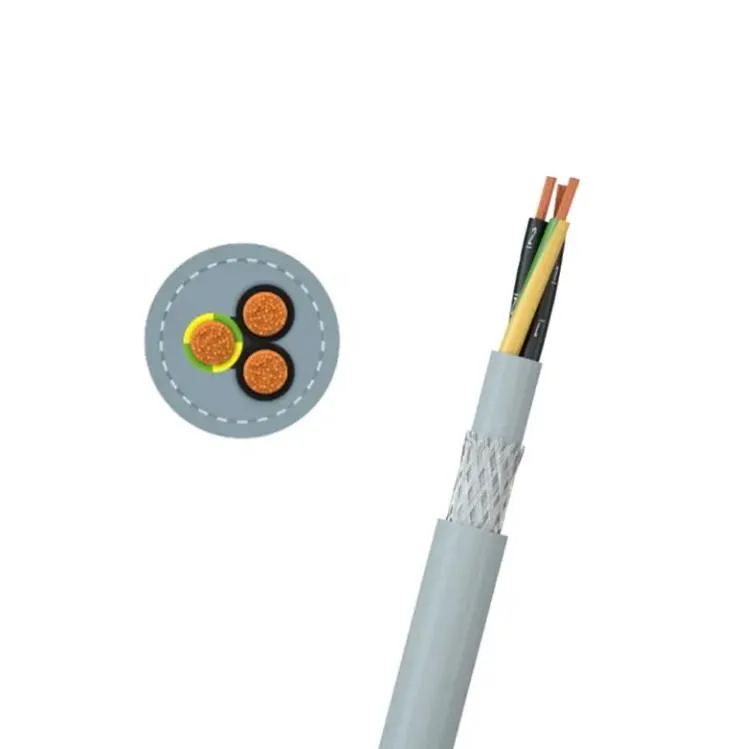
(3 core tps cable)
FAQS on 3 core tps cable
Q: What is a 3 core TPS cable?
A: A 3 core TPS cable is an electrical cable with three insulated copper conductors and a protective sheathing. "TPS" stands for Thermoplastic Sheathed. It is commonly used for wiring in domestic and light commercial applications.Q: Where can I typically use a 3 core TPS cable?
A: 3 core TPS cables are suitable for lighting and power circuits in homes and small businesses. They are ideal for fixed wiring installations. Always ensure installation follows the local electrical codes.Q: What is the advantage of using TPS cable?
A: TPS cable is flexible, easy to install, and provides reliable insulation. Its thermoplastic sheath offers excellent protection against moisture and physical damage. This makes TPS CABLE popular for indoor electrical wiring.Q: How do I identify the correct size of TPS cable for my project?
A: The size of TPS cable depends on the current load and installation requirements. Check local electrical standards or consult an electrician to select the appropriate size. Using the correct size ensures safety and prevents overheating.Q: Is TPS cable safe to use for outdoor installations?
A: Standard TPS cable is mainly designed for indoor use. For outdoor or exposed installations, choose a cable specifically rated for external conditions. Always refer to manufacturer guidelines and safety standards.-
control-cable-that-reliable-signal-transmission-for-industrial-automationNewsAug.23,2025
-
innovations-in-overhead-power-cables-that-enhancing-grid-resilience-with-advanced-aerial-constructionNewsAug.23,2025
-
building-wire-that-reliable-electrical-solutions-for-residential-and-commercial-spacesNewsAug.23,2025
-
xlpe-electrical-cable-that-reliable-power-solutions-from-tianhuan-cableNewsAug.23,2025
-
ethylene-propylene-rubber-cable-that-durable-solutions-from-tianhuan-cableNewsAug.23,2025
-
photovoltaic-cable-that-reliable-connectivity-for-solar-energy-systemsNewsAug.23,2025
-
Reliable LIYCY Cable Solutions for Low and Medium Voltage ApplicationsNewsJul.14,2025





